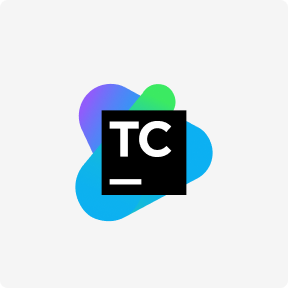Because the nonce is only 32 bits and the hash is 256, there are roughly four billion possible nonce-hash combinations that must be mined before the right one is found. When that happens miners are said https://www.globalcloudteam.com/how-to-build-a-blockchain-10-simple-steps/ to have found the “golden nonce” and their block is added to the chain. They then need to store this physical cash in hidden locations in their homes or other places, incentivizing robbers or violence.

Some of the largest, most known public blockchains are the bitcoin blockchain and the Ethereum blockchain. With many practical applications for the technology already being implemented and explored, blockchain is finally making a name for itself in no small part because of Bitcoin and cryptocurrency. As a buzzword on the tongue of every investor in the nation, blockchain stands to make business and government operations more accurate, efficient, secure, and cheap, with fewer middlemen. The number of live blockchains is growing every day at an ever-increasing pace. As of 2023, there are more than 23,000 active cryptocurrencies based on blockchain, with several hundred more non-cryptocurrency blockchains. Pieces of data are stored in data structures known as blocks, and each network node has a replica of the entire database.
Private blockchain networks
Making a change to any block earlier in the chain requires re-mining not just the block with the change, but all of the blocks that come after. This is why it’s extremely difficult to manipulate blockchain technology. Think of it as “safety in math” since finding golden nonces requires an enormous amount of time and computing power. While confidentiality on the blockchain network protects users from hacks and preserves privacy, it also allows for illegal trading and activity on the blockchain network.
Consensus on data accuracy is required from all network members, and all validated transactions are immutable because they are recorded permanently. While most popularly used for digital currency such as Bitcoin, Blockchain is also now used in different sectors to safeguard records. Although we just skimmed the industry-wide potential of blockchain applications in this article, the career potential in this field is growing exponentially. Getting ahead of the game is always a good strategy for any professional. At Simplilearn, our latest and most up-to-date course on this emerging field is the Professional Blockchain Certificate Program in Blockchain. In partnership with the world-renowned university, IIT Kanpur, this program will help you get on track.
Great Companies Need Great People. That’s Where We Come In.
With Augur, users can bet on real world events and earn payouts automatically based on the results. Ethereum’s built-in cryptocurrency, ether, can be traded on exchanges for dollars or other government-backed currency — just like bitcoin. One of the keys to blockchain technology being viable in the long run is making sure that transactions like Alice and Bob’s can be executed with minimal fees. Fees are important because they incentivize miners to add transactions to the blockchain in a timely manner — but high fees make it harder to convince potential users to get on board.
- Blockchain technology offers a way for untrusted parties to reach a consensus on a common digital history.
- It eventually became a primary component of bitcoin, a popular form of cryptocurrency, where it serves as a public ledger for all network transactions.
- Blockchain technology is currently used across various industries like supply chain, healthcare, retail, media and advertising, financial services, insurance, travel and transportation, oil and gas, and gaming.
- End of story.” At around the same time, the SEC subpoenaed a number of cryptocurrency hedge funds and organizations that held ICOs.
- The two big problems with PoW are that it uses a lot of electricity and can only process a limited number of transactions simultaneously (seven for Bitcoin).
” It seems like blockchain is a platitude but in a hypothetical sense, as there is no real meaning that the layman can understand easily. It is imperative to answer “what is blockchain technology, “including the technology that is used, how it works, and how it’s becoming vital in the digital world. A non-fungible token (NFT) is a unique, blockchain-based identifier that records the ownership of goods. NFT ownership is recorded and secured in a blockchain so that the public can see whoever the owner of a certain item is.
Open for Comments Blockchain for Access Control Systems
Nodes are incentivized with digital tokens or currency to make updates to blockchains. Bitcoin and other cryptocurrencies originated from public blockchains, which also played a role in popularizing distributed ledger technology (DLT). Public blockchains also help to eliminate certain challenges and issues, such as security flaws and centralization. With DLT, data is distributed across a peer-to-peer network, rather than being stored in a single location. A consensus algorithm is used for verifying information authenticity; proof of stake (PoS) and proof of work (PoW) are two frequently used consensus methods. A consortium blockchain is a type of blockchain that combines elements of both public and private blockchains.
Bitcoin can process up to 7 transactions per second and Ethereum maxes out at about 20 transactions per second. Visa, on the other hand, says that its network can handle up to 24,000 transactions per second. The PoW protocol makes such an attack on the blockchain network economically infeasible. For a miner to execute a double-spend attack, the miner must mine a block containing a fraudulent transaction and force a fork in the blockchain. The miner would then need control of at least 50% of the Bitcoin network to make the forked blockchain the dominant one.
Who Sent and Received the First Bitcoin Transaction?
These protocols are often open-source and maintained by devoted developers. In April 2021, the median transaction fee on the Bitcoin network peaked at $62 per transaction. Companies like Stripe and Valve announced they would no longer accept Bitcoin payments due to high fees. Since Bitcoin launched in 2008, thousands of other cryptocurrencies and altcoins (“alternative coins”) have emerged. The global market crash in March 2020 triggered by Covid-19 also led to the prices of crypto assets dropping in one of the sharpest declines in history.

The ‘blockchain trilemma,’ concept was first coined the ‘scalability trilemma’ by Ethereum founder, Vitalik Buterin. The bigger a person’s stake, the more mining power they have—and the higher the chances they’ll be selected as the validator for the next block. The example in the previous section of how blocks get added to the Bitcoin Blockchain explains this system.
Who Owns Blockchain Technology?
This makes hybrid blockchains ideal for use in those cases where a balance is required between transparency and privacy. For example, in supply chain management multiple parties can access certain information, but sensitive data can be kept private. Also sometimes known as hybrid blockchains, permissioned blockchain networks are private blockchains that allow special access for https://www.globalcloudteam.com/ authorized individuals. Organizations typically set up these types of blockchains to get the best of both worlds, and it enables better structure when assigning who can participate in the network and in what transactions. A blockchain network that works in a restrictive environment like a closed network, or that is under the control of a single entity, is a private blockchain.
Only it can decide who is invited to the system plus it has the authority to go back and alter the blockchain. This private blockchain process is more similar to an in-house data storage system except spread over multiple nodes to increase security. Blockchain is the innovative database technology that’s at the heart of nearly all cryptocurrencies. By distributing identical copies of a database across an entire network, blockchain makes it very difficult to hack or cheat the system. Mining requires significant computational resources and takes a long time due to the complexity of the software process.
Disadvantages of Blockchain Technology:
Bitcoin is a digital currency that operates without any centralized control. Bitcoins were originally created to make financial transactions online but are now considered digital assets that can be converted to any other global currency, like USD or euros. A public Bitcoin blockchain network creates and manages the central ledger.

